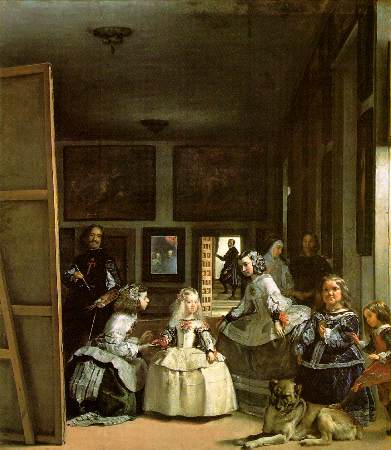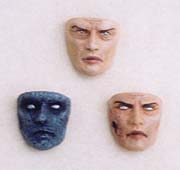 |
The hypertext
writer is both “vanguard artist and academic critic,” a heuretic
functionary, as Greg
Ulmer might call him, capable of producing as well as consuming
theory (xii-xiii). He publishes to cyberspace,
certainly in some ways a less-forgiving corporative Westworld,
where a subject may re/invent himself while confronting others
doing the same, but only while concurrently acquiring the cultural
capital necessary in order to serve capital. The metaphor
that will best allow us to see how the posthuman discovers his
condition, transcends his commodity form must therefore be more
than a Westworld and instead a mirror, the looking glass through
which Alice falls, the stage in the Lacanian Imaginary, the mirror
in Velásquez’s Las Meninas—a painting of a painting—or
better, Michel Foucault’s “mirror” in Las Meninas, a primitive
technology, indeed, but one that would allow an observer to observe
himself being observed if not for the artist’s deliberate intervention,
that is, the artist’s blackening the part of the reflection that
is the observer’s, that is ours, what Foucault calls the “other
side of the psyche” (6). One might imagine an instructor
from the old school, the New Critic, say, or the Oxford don, intervening
in a similar way.

|
